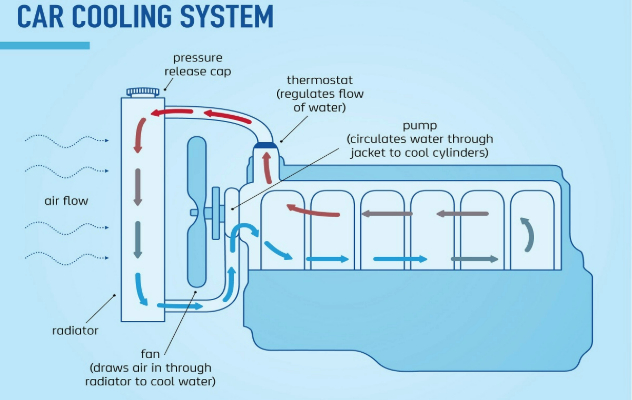Car cooling system: why engine coolant is so important

- Cooling system checks should be part of routine maintenance
- Check your coolant level every time you refuel
- Never remove the radiator cap on a hot engine
- If your car has overheated, pull over and call for assistance
Proper maintenance and regularly checking your engine's cooling system is especially important for cars driven in Australia's harsh climates. Ensuring this system is working correctly can help you avoid costly engine damage.
Many engine failures can be attributed to neglect of its cooling system. Expensive breakdowns caused by an overheated engine can happen quickly but are, thankfully, avoidable in most instances. Here, we teach you how to keep an eye on your car's cooling system.
How to check your engine’s coolant level
Make a habit of doing a quick visual check of the coolant level in the overflow bottle each time you fill up with fuel. If the level is low, ensure you don’t remove the radiator filler cap until the engine is cool – it usually takes a few hours after a drive.
If you’re topping up or changing the coolant yourself, check the owner’s manual, or call NRMA motoring advice on 13 11 22, for the correct type and quantity of coolant to use, as well as the right method. You can also visit an NRMA car servicing store for advice.
What if I have to continually top up the engine coolant?
If you have to top up the coolant level often, or you’ve noticed a puddle under the car, the radiator or a coolant hoses may be leaking. If there is no sign of coolant coming out of the engine, it could be leaking inside the engine.
An external leak is usually easier to fix than an internal one, a sign that could point to a more serious problem. Either way, it’s important to take your vehicle to a mechanic as soon as possible to prevent further problems.
As well as checking the coolant level, keep an eye on the temperature gauge. If the needle rises out of its normal range, this will often trigger a warning light or tone to signal a cooling system problem.
Stopping the car somewhere safe and calling for roadside assistance could save your car from expensive engine damage.
How does my car’s cooling system work?
A car's cooling system moves coolant through its engine to remove heat and maintain an optimum operating temperature. The system typically consists of a pump, a heat exchanger (known as a radiator), a radiator carp, an overflow (or expansion) tank, and hoses to connect them all together. Sensors are also fitted to this system so the onboard computers can monitor temperatures.
Even in today’s fuel-efficient engines, only around a third of the heat produced during combustion is converted into mechanical energy to drive the car. The rest is carried away by the exhaust and cooling systems.
The main components of a car cooling system
- Radiator with pressurised cap
- Overflow bottle
- Thermostat
- Cooling fan

Coolant is a mixture of water and chemicals designed to prevent boiling, freezing and corrosion inside the engine. If you’re driving in cold conditions, you may need to add anti-freeze to the cooling system. Always follow the vehicle manufacturer’s directions when using anti-freeze and coolant.
A pressurised radiator cap raises the boiling point of the coolant, which is why you should never remove the radiator cap on a hot engine. The overflow bottle lets the coolant expand when it’s hot.
The cooling fan provides air flow through the radiator when the car is not moving, such as when you’re stuck in traffic.
The cooling system maintains the engine at an ideal operating temperature using a thermostat. The thermostat restricts the flow of coolant when the engine is cold, to help it get to this efficient working temperature quickly.


